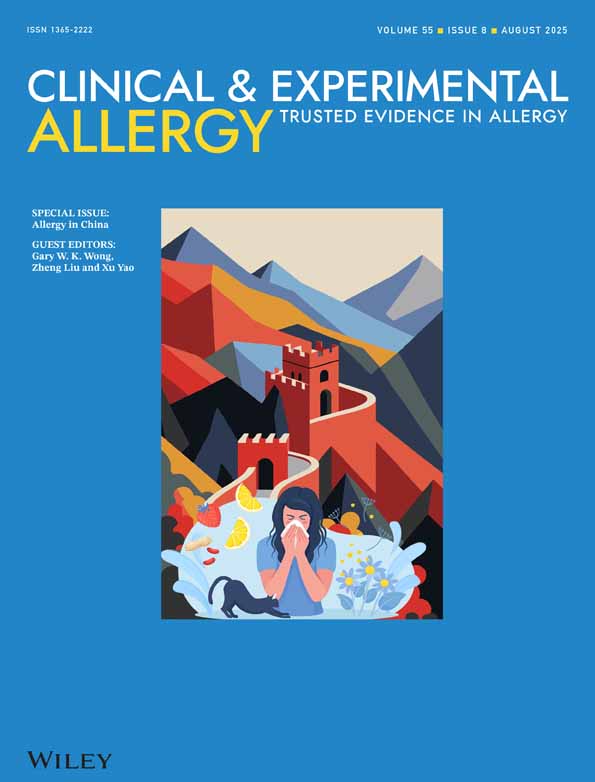Skin-prick test preparations of Dermatophagoides pteronyssinus for prediction of a positive response to provocation testing
Summary
Skin-prick testing (SPT) with allergen is widely used in the investigation of respiratory disease, yet its relationship to the results of provocation testing of the nose or bronchus remains obscure. We have studied this relationship by determining the concentration of Dermatophagoides pteronyssinus extract and the associated weal size which resulted in the lowest ‘false positive’ (FP) and highest ‘true positive’ (TP) rates when compared to the results of bronchial and nasal provocation testing. Subjects studied included those with both positive and negative bronchial or nasal provocation tests. For each of a series of concentrations of D. pteronyssinus extract, standardized in relation to content of Der pI antigen, receiver operating characteristic (ROC) curves of TP against FP rates were constructed. Optimal diagnostic concentrations for SPT were 0.112–1.122 ± 106 IU of Der pI ml-1. However, at the lower end of this range the optimum weal areas for a positive test with the D. pteronyssinus extract were very small (<5 mm2). More appropriate concentrations for use in clinical practice were 0.56–1.122 × 106 IU Der pI ml-1 since at these concentrations more easily measurable weal areas of 5–10 mm2 (2.6–3.6 mm diameter) were almost equally predictive of a positive provocation test.




